Master Google Search Ads: Top Strategies to Boost Campaign Performance Instantly
Unlock the secrets to Google Search Ads success! Dive into proven strategies to boost ad performance, maximize ROI, and outshine your competition. Start seeing results with expert insights tailored for impactful advertising.
CAMPAIGN OPTIMIZATION
11/3/202415 min read
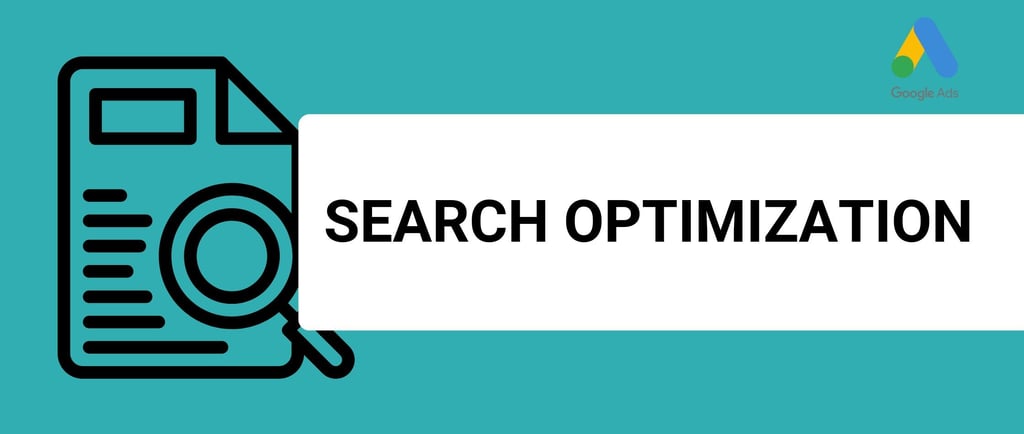

Running successful Google Ads campaigns isn't just about launching ads—it requires continuous Google Search Ads Optimization to achieve the best results.
Effective Google Search Ads Optimization ensures that your campaigns are efficient, cost-effective, and generate maximum ROI.
This article will discuss essential strategies and insights that can transform your Google Ads efforts.
These strategies can help you outperform competitors and drive conversions through strategic optimization.
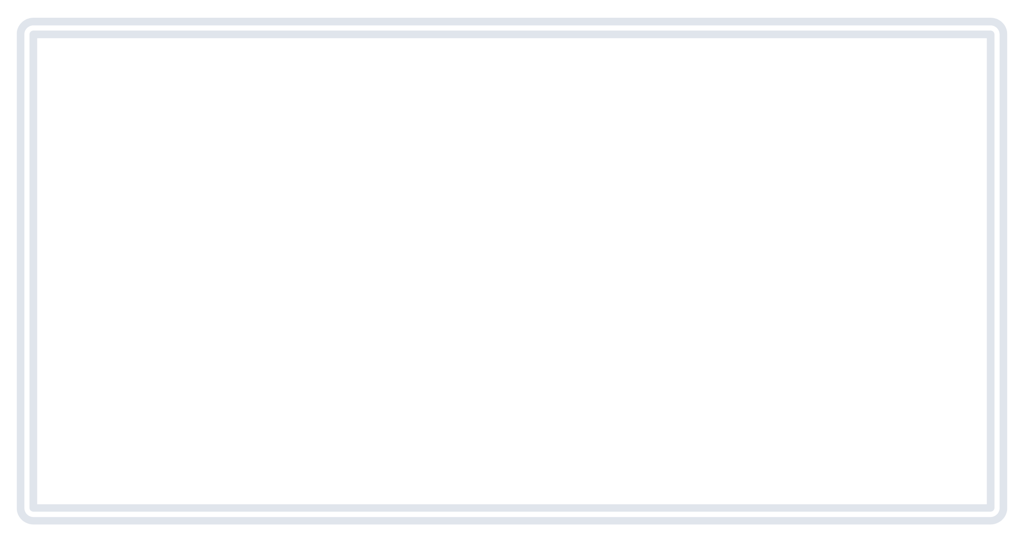
Table of contents:
Concrete Optimization Actions
Enhancing your Google Search Campaigns involves a series of targeted actions that address various aspects of your campaigns. Implementing these specific steps will significantly improve your Google Search Ads Optimization and overall performance:
1. Optimize Spending and Structure
Monitor Campaign Performance Regularly:
Scale Successful Campaigns: Identify campaigns with strong conversion metrics but low search impression share (below 65%) and consider increasing their budgets as part of your Google Search Ads Optimization strategy.
Refine Underperforming Campaigns: Conduct weekly reviews of campaigns that show poor performance indicators like high CPA or low ROAS, and make necessary adjustments to enhance your optimization efforts.
Adjust Ad Group Allocations:
Reallocate Budget: Move ad groups that perform well but receive low spend into separate campaigns to maximize their potential within your Google Search Ads Optimization efforts.
Enhance Low-Performing Ad Groups: Continuously optimize ad groups with poor results by tweaking keywords, bids, or ad copy.
2. Enhance Targeting Precision
Conduct Regular Keyword Audits:
Add Relevant Keywords: Incorporate high-converting search terms into your keyword list to capture more qualified traffic, a key aspect of Google Search Ads Optimization.
Implement Negative Keywords: Regularly update your negative keyword list to filter out irrelevant searches and reduce wasted spend, enhancing your optimization efforts.
Analyze Keyword Performance:
Pause High-Cost, Low-Performing Keywords: Identify keywords with high CPC and low conversion rates, and pause them to improve overall efficiency.
Focus on High-Quality Keywords: Allocate more budget to keywords that generate valuable phone calls or conversions.
Review Auction Insights Monthly:
Identify New Competitors: Use the Auction Insights report to spot new entrants or increased spending from existing competitors and adjust your strategy accordingly.
Improve Keyword Quality Scores:
Enhance Ad Relevance: Update your ad copy to better match the keywords and user intent.
Optimize Landing Pages: Ensure your landing pages are relevant, load quickly, and provide a seamless user experience to boost quality scores.
Geographic and Device Optimization:
Adjust Bids by Location: Optimize bids for locations that perform well and exclude or reduce bids for underperforming areas.
Device-Based Bidding: Modify bids based on device performance to ensure you’re getting the best ROI from desktops, tablets, and mobiles.
Audience Targeting:
Use Remarketing Lists: Target users who have previously interacted with your website to increase conversion rates.
Expand Audience Segments: Add new audience groups if your current segments account for less than 80% of traffic.
3. Refine Ads and Landing Pages
Conduct Regular Ad Testing:
A/B Test Ad Variations: Continuously test different headlines, descriptions, and CTAs to determine what resonates best with your audience.
Pause Low-Performing Ads: Remove ads that consistently underperform in terms of CTR and conversion rates.
Maintain High-Quality Ad Assets:
Update Ad Extensions: Regularly review and refresh your sitelink, callout, and other ad extensions to keep them relevant and engaging.
Optimize Visual Assets: Ensure any image extensions or promotional assets are up-to-date and effectively support your campaign goals.
Improve Landing Page Effectiveness:
Ensure Consistency: Align your landing pages with your ad copy and keywords to provide a coherent user experience.
Enhance User Experience: Improve page load times, streamline navigation, and make sure CTAs are clear and compelling to boost conversion rates.
4. Optimize Bidding Strategies
Implement Smart Bidding:
Switch to Automated Bidding: Once you have sufficient conversion data (at least 30 conversions within 30 days), use strategies like Max Conversions or Target ROAS to leverage Google's machine learning for optimal bid adjustments.
Adjust Bids Based on Performance:
Dynamic Bid Adjustments: Modify bids based on factors such as time of day, location, and device to maximize your ROI.
Exclude Non-Performing Terms: Continuously remove or reduce bids on high-cost terms that do not convert to preserve your budget for more effective keywords.
5. Maintain Quality Control
Ensure Accurate Conversion Tracking:
Regularly Verify Tracking Codes: Make sure all conversion actions (e.g., form submissions, and phone calls) are correctly tracked and reported accurately.
Monitor Budget and Payments:
Align Budget with Goals: Ensure your daily and monthly budgets are sufficient to support your campaign objectives.
Check Payment Methods: Confirm that your payment methods are up-to-date and functioning to avoid any campaign disruptions.
Stay Updated with Google Recommendations:
Review Automated Suggestions: Regularly check and implement relevant Google Ads recommendations to enhance your campaign performance.
Respond to Notifications: Address any alerts or messages from Google promptly to maintain campaign health and compliance.










Effective Keyword Research for Search Ads Optimization
Effective keyword research is at the heart of Google Search Ads Optimization, setting the foundation for campaigns that attract the right audience and convert leads into customers. A successful keyword strategy focuses on high-intent terms—keywords that suggest a user is ready to take a specific action, like making a purchase or signing up for a service. Tools like Google Keyword Planner and SEMrush are invaluable here, providing insights into which terms have strong search volume and are directly aligned with user intent.
As search behaviors evolve, a significant shift toward long-tail keywords has emerged. Long-tail keywords are longer, more specific phrases that capture highly focused search intent, and they’re quickly becoming essential in digital marketing. Unlike generic, high-volume keywords, long-tail keywords allow advertisers to reach audiences with very precise needs, often resulting in higher conversion rates. This shift is driven by the increasing use of voice search and mobile queries, both of which typically yield more conversational, specific search phrases. For example, instead of searching for a broad term like “running shoes,” users might ask, “best running shoes for marathon training.” This longer query indicates a deeper intent and a more informed user, often signaling that they’re further along in the buying journey.
Long-tail keywords often have lower search volumes, but their specificity makes them more effective in reaching highly targeted segments of the audience. By focusing on these niche terms, advertisers can minimize competition and improve ad performance, as users who search for detailed phrases are more likely to engage with ads that closely match their needs. Moreover, targeting these keywords helps advertisers manage costs, as long-tail keywords typically have lower bid prices compared to high-competition, general terms. This allows advertisers to capture valuable traffic without overspending on ad budgets.
To keep campaigns effective, keyword lists should be continually refined. Using performance data, advertisers can adjust their strategy based on which long-tail keywords drive the most conversions. By staying responsive to search trends and user behavior, advertisers can enhance the relevance of their ads and maximize return on investment (ROI). As users increasingly lean toward specific, intent-driven searches, integrating long-tail keywords into search ads optimization is more essential than ever, creating opportunities for businesses to connect with the right audience at the right moment.

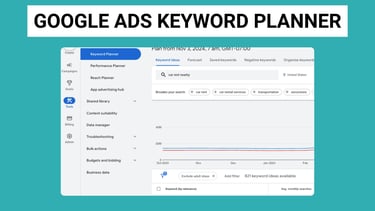
Creating High-Performing Ads: Crafting Relevant Ad Copy
Creating high-performing ads begins with crafting compelling, relevant ad copy that captures the audience’s attention and aligns closely with their search intent. In Google Search Ads Optimization, ad copy serves as the first impression a potential customer has of a business, making it essential for ads to stand out and resonate. Ads need to be direct and clearly communicate the value offered, enticing users to click.
To achieve this, writing engaging headlines that address the audience’s needs or pain points is essential. Headlines should immediately signal relevance to the search query, reinforcing that the ad is precisely what the user is looking for. For instance, if someone searches “affordable web design services,” a headline like “Affordable, High-Quality Web Design Services” speaks directly to their query, establishing a connection that’s likely to increase click-through rates (CTR).
Highlighting the benefits over mere features in the ad copy is crucial. Rather than focusing solely on product specifications, effective ads communicate the impact or outcome the user will experience. For example, instead of simply stating, “Our software includes 24/7 support,” an ad might say, “Get Reliable 24/7 Support to Keep Your Business Running Smoothly.” This approach addresses the user’s needs and builds a stronger case for engagement.
Including strong calls-to-action (CTAs) in ad copy further boosts performance. Phrases like “Get Started Today,” “Contact Us Now,” or “Claim Your Free Trial” create a sense of urgency and clarity about the next steps, encouraging users to take action. A well-chosen CTA not only guides the user but also reinforces the ad’s intent, increasing the chances of conversion.
Ad extensions, such as sitelinks, call buttons, or location information, are also instrumental in improving visibility and engagement. Extensions provide additional details that allow users to navigate directly to specific sections of the website, contact the business, or find its location without extra clicks. By offering more information upfront, extensions enhance the ad’s relevance, which can boost CTR and Quality Score.
Overall, creating high-performing ad copy requires a blend of relevance, clarity, and persuasive elements. By aligning headlines with search intent, emphasizing benefits, incorporating strong CTAs, and utilizing ad extensions, advertisers can craft ads that not only capture attention but also drive meaningful engagement. This optimized approach to ad copy is foundational to successful Google Search Ads campaigns, positioning ads for better rankings, improved user engagement, and ultimately, higher conversion rates.
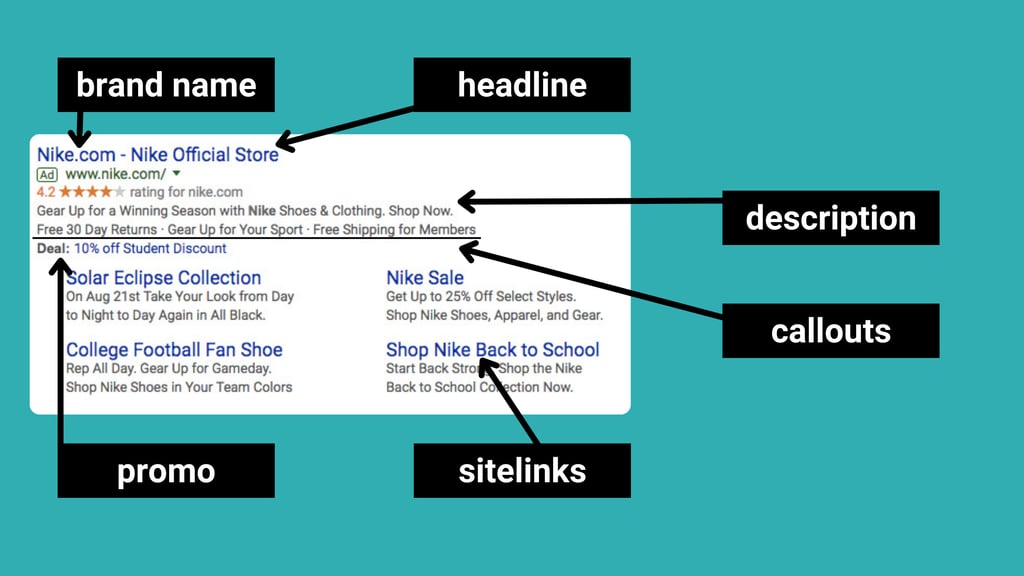

Improving Quality Score for Better Ad Placement
Improving Quality Score is essential in Google Search Ads Optimization, as it directly influences ad ranking, cost-per-click (CPC), and overall ad visibility. Quality Score is Google’s assessment of the relevance and quality of your ads, landing pages, and keywords. A higher Quality Score not only helps secure better ad placements but also lowers costs, as Google rewards well-optimized ads by charging less per click. As a result, boosting Quality Score can significantly enhance a campaign’s return on investment (ROI) and overall effectiveness.
One of the key factors affecting Quality Score is ad relevance. Google measures how closely your ad copy matches the searcher’s query, meaning that the more relevant your ad is to a user’s intent, the higher its Quality Score is likely to be. Crafting ads that directly address user needs and pain points helps establish this relevance. For example, an ad targeting users searching for “affordable office chairs” should ideally include that exact phrase or similar terms in the headline and description, instantly signaling to Google and the user that it meets the search intent.
Landing page experience is another critical component of Quality Score. Google examines whether the landing page that users are directed to aligns with the ad message and provides a valuable, seamless experience. To improve this, advertisers should ensure that landing pages are not only relevant to the ad but also optimized for fast loading times, ease of navigation, and mobile responsiveness. Consistency between the ad and landing page content is vital; if a user clicks an ad about “ergonomic office chairs” and the landing page only shows general office furniture, the mismatch may lead to a lower Quality Score. Including relevant keywords on the landing page, as well as clear calls to action, can significantly improve the user experience and support Quality Score improvement.
Click-through rate (CTR) is also a major influence on Quality Score. A higher CTR suggests to Google that users find the ad valuable and engaging, signaling relevance and quality. Testing multiple ad copy variations is an effective way to improve CTR, as it helps determine which wording resonates best with the target audience. Small changes to the headline, call-to-action, or phrasing can lead to substantial CTR improvements. For example, a CTA like “Shop Now for Discounts” may perform better than a generic “Learn More,” especially for users already close to making a purchase decision.
Improving Quality Score through these strategies not only increases the likelihood of better ad placements but also reduces the cost-per-click, making campaigns more efficient. Higher Quality Scores allow advertisers to stretch their budget further, as Google favors ads that deliver a good user experience. Thus, focusing on ad relevance, landing page optimization, and enhanced CTR forms the foundation of Quality Score optimization, a critical step in maximizing the performance of Google Search Ads.
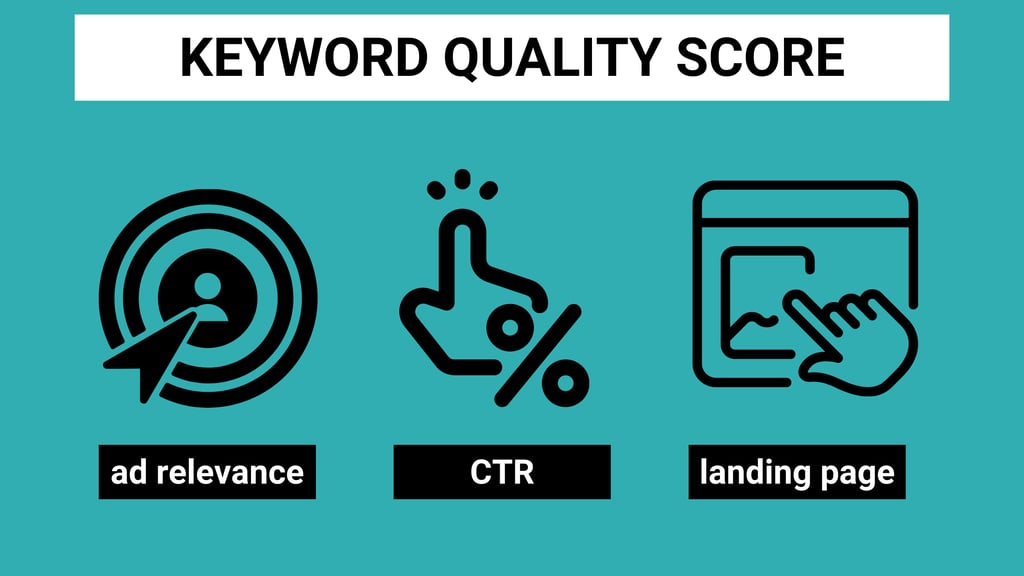

Advanced Campaign Optimization Techniques
Advanced campaign optimization techniques are essential for advertisers looking to take their Google Search Ads performance to the next level, allowing for more efficient and effective ad management. These strategies, based on insights from Google Ads best practices, leverage machine learning and automation to improve targeting, increase relevance, and drive better overall results. Here’s a closer look at these techniques and how they can enhance campaign performance.
Campaign Consolidation is a key approach in advanced optimization. Many advertisers previously relied on highly segmented campaigns, dividing ad groups based on tightly focused keyword themes. However, with Google’s advancements in machine learning, this level of segmentation can actually be counterproductive. Google’s algorithms perform best with larger data sets, allowing them to learn more quickly and make more accurate predictions. Consolidating campaigns, therefore, helps provide Google’s AI with a broader data set, enabling it to optimize more effectively. By using broader targeting parameters and allowing automated systems to adjust based on performance, advertisers can achieve better results with less manual oversight. Broad match keywords, for instance, work effectively in consolidated campaigns, capturing a wide array of search terms that Google can then refine and optimize.
Dynamic Search Ads (DSAs) are another powerful tool in advanced optimization. DSAs are automatically generated based on the content of a website, meaning they match search queries to the specific pages on an advertiser’s site. This type of ad is ideal for advertisers with extensive or frequently changing inventories, such as e-commerce businesses, as it ensures that users are presented with the most relevant ads without requiring manual updates. DSAs save considerable time in ad management and improve ad relevance by directing users to the most appropriate landing pages. Since DSAs rely on Google’s understanding of site content, they offer a hands-off approach to ad creation, but it’s essential to have well-organized and optimized website content to make the most of DSAs.
Responsive Search Ads (RSAs) are designed to enhance ad flexibility and personalization, allowing advertisers to upload multiple headline and description options. Google then automatically tests various combinations to find the best-performing versions based on the user’s search query and behavior. However, while RSAs allow for numerous variations, it’s often best to start with fewer headline options to facilitate Google’s machine learning processes. Too many options can slow down the learning phase and dilute performance data. By starting with a select few variations, advertisers can allow Google to quickly identify which combinations work best and then build from there, making incremental adjustments to optimize performance over time.
Broad Match Keywords paired with Smart Bidding represent a significant shift in keyword strategy. In the past, advertisers often relied heavily on exact and phrase match keywords to tightly control which queries their ads appeared for. Now, Google’s machine learning enables effective broad match targeting by analyzing intent and relevance rather than focusing solely on exact keyword matches. Pairing broad match keywords with Smart Bidding strategies, such as Target CPA (Cost Per Acquisition) or Target ROAS (Return on Ad Spend), allows Google to automatically adjust bids based on the likelihood of a conversion, all while capturing a wide range of relevant search terms. This approach reduces the need for long, detailed keyword lists and allows for a more data-driven, adaptable campaign structure.
Together, these advanced optimization techniques—campaign consolidation, DSAs, RSAs, and broad match keywords with Smart Bidding—form a robust framework for Google Search Ads Optimization. By leveraging these strategies, advertisers can streamline campaign management, maximize the potential of Google’s machine-learning capabilities, and create ads that are more relevant and more effective in driving conversions. These techniques enable advertisers to stay competitive in a constantly evolving digital landscape, allowing them to reach and convert their target audience more precisely and efficiently.








Common Mistakes in Google Search Ads Campaigns
Many advertisers struggle with underperforming campaigns due to avoidable mistakes. Effective Google Search Ads Optimization involves avoiding these common pitfalls:
Not Testing Search Ads: Relying on a single ad variation without A/B testing can limit your performance. Regularly testing different ad copies, headlines, and CTAs helps identify what resonates best with your audience and improves overall campaign effectiveness.
Over-Segmenting Campaigns: Too much segmentation can make it hard to gather enough data, leading to misinformed decisions. Excessive compartmentalization of campaigns can dilute valuable insights and hinder optimization efforts. Aim for a balanced structure that allows for meaningful data collection without unnecessary complexity.
Using SKAGs (Single Keyword Ad Groups): Though once popular, SKAGs overcomplicate campaigns, and Google's machine learning now performs better with broad match keywords for scaling. Instead of isolating each keyword, group similar keywords together to leverage automated bidding and optimization features more effectively.
Improper Use of Keyword Match Types: Neglecting to strategically use keyword match types can severely impact your campaign's performance. Best Practice: Start with exact match keywords to collect precise data and understand which terms drive high-quality traffic. This approach ensures that your ads are shown to a highly relevant audience, maximizing conversion potential. Once your account has amassed sufficient data—typically at least 30-50 conversions over the past month—you can scale your campaigns by incorporating broad match keywords. Broad match allows your ads to reach a wider audience, and when combined with smart bidding strategies, it leverages Google's machine learning to optimize bids in real-time for better performance and increased reach.
Avoiding these mistakes is essential to effective Google Search Ads Optimization. By implementing a strategic approach to keyword match types and leveraging automated tools once adequate data is available, you can enhance your campaign's scalability and overall success.








How to Stay Up-to-Date with Google Ads Changes
Staying up-to-date with Google Ads changes is crucial for advertisers aiming to maintain successful and competitive campaigns. Google regularly introduces new features, updates existing tools, and adjusts its algorithms, all of which can significantly impact ad performance, targeting options, and bidding strategies. For advertisers, being aware of these changes is essential to keep optimization strategies aligned with current best practices, prevent potential issues, and make the most of the latest tools and insights Google offers.
One of the primary resources for staying informed is the Google Ads Help Center. This official resource provides detailed documentation on Google Ads features, policies, and updates. It’s an essential source for understanding new tools, ad formats, and campaign settings, as well as for learning how Google’s algorithm changes might affect campaign performance. The Help Center is particularly valuable for advertisers who want in-depth guidance directly from Google, as it often includes best practices, troubleshooting tips, and comprehensive guides for optimizing campaigns.
Industry blogs are another powerful resource for staying updated on Google Ads developments. Blogs like Search Engine Land, Moz, and WordStream offer timely analysis and expert opinions on Google Ads updates, often breaking down complex changes into actionable insights. These blogs also provide industry perspectives and case studies that showcase how other advertisers are responding to new features or changes in Google’s algorithms. Following these blogs can help advertisers stay aware of broader trends in digital advertising, learn new techniques, and discover innovative strategies to incorporate into their own campaigns.
Community forums offer a more interactive way to stay informed. Platforms like Reddit’s PPC group, the Google Ads Community, and other digital marketing forums allow advertisers to discuss challenges, share insights, and ask questions about Google Ads changes in real-time. These communities often include experienced advertisers who can provide feedback based on their own experiences, helping others quickly adapt to changes or troubleshoot issues that arise from updates. Engaging in these forums allows advertisers to gather insights from a range of perspectives, making it a great way to learn from both peers and industry experts.
By regularly engaging with these resources, advertisers can ensure their optimization strategies remain current and effective. Staying informed about Google Ads changes enables them to quickly adapt to new features, avoid potential pitfalls, and continuously improve their campaigns. This proactive approach allows advertisers to make the most of Google’s evolving ad platform, maintain strong campaign performance, and stay competitive in the dynamic world of digital advertising.
Conclusion
Don’t miss out on the opportunity to boost your business with Google Search Ads Optimization.
At ItsDigitalMe, we specialize in creating high-performing Google Ads campaigns that drive conversions and maximize ROI through expert optimization techniques.
Contact us today to see how we can help you achieve your advertising goals!
CONTACTS
incomewithdigitalmarketing@gmail.com
BOOK WITH US
SERVICES
Google Ads Assisstance
Google Analytics Setup
Google My Business Management
